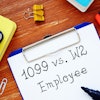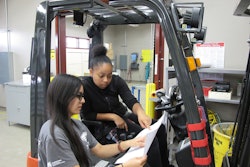
Back when Thomas Edison and his contemporaries were looking to change the way we illuminate our world, these engineering pioneers could rely only on their own ingenuity and whatever few reference materials they could get their hands on. Today’s engineers have a vastly more expansive universe of reference information at their fingertips—and therein lies the problem.
In the age of “Big Data” and the Internet of Things, it’s become a cliché to say that global data is accumulating at an ever-increasing rate. And yet the numbers still stagger: Analyst firm IDC predicted that the amount of data generated in 2020 will be about 44 times greater than it was in 2009, reaching 40 zettabytes (40 x 1021 bytes) annually.
The engineering domain is undoubtedly a significant contributor to this information boom—not surprising when one considers the amount of information required to support a product or engineering project throughout its life cycle. Engineers, of course, are both the victims of, and the culprits behind, this information avalanche, generating reams of data while also challenged to find the materials they need to make the best decisions.
Surprisingly, despite the digital tide, many engineers remain loyal to print and hard copies. The 2018 report from ENGINEERING.com, “How Engineers Find Information,” for example, notes that 59 percent of the 1,187 engineers surveyed said they continue to use print sources. That said, as a group, engineers have adapted to the information tsunami by increasingly consuming the bulk of their content electronically; the same survey found that 98 percent of engineers are reading content on their computers, and 70 percent are using their smartphones to find information.
Or, should we say, “trying to find information.” Because as the volume and velocity of information have continued to ramp up, the challenge for engineers is to navigate through the waves of data to locate the best answers to their questions. One illustration of how hard this challenge has become: Research firm IDC found that workers can find the information they need to do their jobs only 56 percent of the time. The more data that accumulates, the harder it is to get answers—and value—out of it.
Changing the Light Bulb
Returning to the question posed by the title of this article, how many books does it take to change a light bulb? When Edison and his contemporaries were working to make their game-changing advances in electric illumination, they had a relatively small universe of reference materials to guide them, and they created much of the science themselves along the way. How many books did it take for Edison to change the way we light our world? Not many.
This isn’t to demean the value of books by any means, but merely to acknowledge that the world had fewer engineering texts and handbooks and journals in the late 19th Century than exist today. Over the years, engineers and researchers have continued to build on the innovations of Edison’s generation and have likewise expanded the “known universe” of reference information to the point where “books” —as shorthand for printed materials in general—are no longer fully capable of encompassing all the knowledge that technical workers need.
Advances occur so rapidly now that books simply can’t be written fast enough to keep up with the pace of innovation. The scope of knowledge that engineers must incorporate into their decisions has also expanded, and they need the ability to search easily across many different content sources and compare data between sources quickly to find the best answer for any given problem they need to solve.
Material Issues
Let’s take one relatively narrow but extremely important niche: information about materials and their related properties. This data is critical for all engineers worldwide who deal with materials, and without this information they simply can’t do their jobs properly.
The basic need is to understand the fundamental parameters of a material and align those to the material’s intended application. Consider the simple example of the components that go into a vehicle front axle. An engineer receives a specification from Japan and needs to find an equivalent material in the U.S. market, and also needs to be absolutely sure that the replacement material will behave the same way as the original. This means answering questions such as:
- What are the basic properties of the materials?
- How strong are they?
- Will the material be able to withstand a combination of forces from potholes on the road to bumps off the road?
- What about environmental conditions, loading, overloading and so on.
Getting accurate answers to these kinds of questions about materials is clearly essential. After all, the root cause of many engineering failures can be traced to lack of correct information about materials and their specifications. One researcher at a major science and technology organization found that 30 percent to 40 percent of all FDA recalls for medical devices are related to materials, often associated with an over-reliance on material data sheets. It frequently is the case that the information is “out there somewhere,” but engineers simply can’t find the correct needle, buried deep in some haystack somewhere, that they need to get their design right the first time, let alone advance a technology or make an innovative breakthrough.
An Illuminating Solution
Fortunately, modern-day Edisons can avail themselves of solutions that bring all the wealth of knowledge from the print world (and more) into the digital age, while making it exponentially easier to find needles amongst the haystacks.
For example, in the sphere of materials information, engineers today can take advantage of an online database solution like Total Materia, from the Swiss company Key to Metals AG, that provides online access to properties information for about 450,000 materials. That translates to some 20 million individual property records, such as chemical composition data, mechanical and physical properties, and around 15 million material equivalency connections.
Putting all this information into print form would require about 150,000 standard pages—that’s a lot of books just to change a light bulb. The thought of searching through 150,000 pages to find and compare materials would be daunting at best, simply impossible at worst. But a cloud-based database solution makes properties data easily discoverable through intuitive search capabilities, the properties can be augmented and kept up-to-date on an ongoing basis, and engineers can quickly compare materials and properties for selection or replacement.
No one would dispute that Thomas Edison set the world alight with his innovations in electric power generation, communications, and, of course, illumination. But by putting essential information at the fingertips of researchers worldwide, the new generation of technical reference solutions like Total Materia is helping engineers (including light bulb designers) and their organizations to be the leading lights in their industries today and into the future.



















![Pros To Know 2026 [color]](https://img.sdcexec.com/mindful/acbm/workspaces/default/uploads/2025/08/prostoknow-2026-color.mduFvhpgMk.png?ar=16%3A9&auto=format%2Ccompress&bg=fff&fill-color=fff&fit=fill&h=135&q=70&w=240)